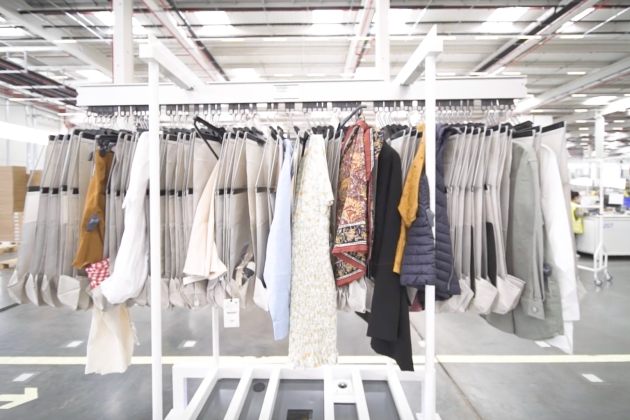Inditex Ramps Up Zara Store Deliveries to Cut Out-of-Stocks

Zara’s parent wants fast fashion to get even faster.
Inditex is upping the frequency of truck deliveries to some Zara stores in its native Spain as part of a trial to keep store assortments fresh.
More from Sourcing Journal
Zara has increased truck deliveries to multiple stores in Madrid to a cadence of four times per week, up from the usual two per week, according to an October report from Bloomberg. The fast-fashion giant carried out the first test in the spring, the report said. Zara has 13 stores in Madrid, including its biggest flagship anywhere.
More frequent deliveries could help Zara reduce lost sales due to unavailable stock because the inventory is replenished for consumers whether they shop in stores or online.
Sourcing Journal reached out to Zara for comment.
Stockouts remain a concern amid heightened customer expectations and the potential for supply chain bottlenecks, with Bed Bath & Beyond blaming this problem for hundreds of millions in lost sales, which eventually led to the home goods retailer filing for bankruptcy.
In the U.S., 78 percent of shoppers said they had experienced out-of-stocks in brick-and-mortar stores during the past 12 months, while 73 percent reported the same issue online, according to an October survey from retail store execution platform Retail Insight.
Fifty percent of shoppers reported items being listed as “in stock” online, but weren’t available when they arrived in-store. Another 37 percent had experienced store associates not being able to find an item, even though they believed it was available in the store. This can impact a bottom line, with 24 percent saying these shelf gaps would make them abandon their purchase and leave the store without buying other items.
Inditex uses prior sales data, current stock availability and daily orders from store managers to optimize stock allocation according to the needs of each of its 5,745 stores, which include 2,259 locations under the Zara and Zara Home concepts.
Last year the Renewcell partner developed a new model that calculates the optimal number of units for every initial shipment of a new product, according to the company’s latest annual report.
Inditex operates a non-traditional logistics ecosystem compared to many retail rivals. Iit doesn’t rely on distribution centers in different parts of the world to ship items to nearby markets.
Instead, most of Inditex’s products are centralized in Spain for distribution and then sent in small bundles to stores worldwide twice a week, allowing the retailer to replace stocks faster. The company has 12 logistics centers in total.
The company, which also owns fashion brands including Massimo Dutti and Pull&Bear, further delivers supply chain visibility by deploying RFID and developing technologies such as its proprietary Integrated Stock Management System and Inditex Open Platform. The first system is designed so staff can quickly locate any article of clothing, regardless of where it is located, and make it available to customers, while the second enables the fast-fashion giant to integrate more APIs into its business for different departmental needs.
Inditex revealed in a March earnings call when discussing full-year 2022 earnings that it was increasing logistics capacity across four of its distribution centers in Spain: Zara’s warehouses in Arteixo and Zaragoza; Bershka’s facility in Tordera; and one site for Stradivarius in Sallent. Inditex is also expanding capacity at Zara’s distribution center in Lelystad, the Netherlands.
Six months later, Inditex’s capital markets director, Marcos López, reiterated in a September earnings call that the warehouse plans are “very much in line” with prior expectations for the year so far.
“The projects we referred to in Zaragoza, in Lelystad, in [Sallent], are very much on target,” López said.
As Inditex works to minimize stockouts, the company also cut inventory 6.9 percent year-over-year to $3.7 billion at the halfway point of 2023, down from $3.9 billion in the year prior.
While having fewer product seems counterintuitive on the surface to filling stock, Inditex anticipates increased in-store sales productivity this year, even as gross store space is expected to increase 3 percent by the end of December. Constant-currency sales from Aug. 1-Sept. 11 were up 14 percent from the year prior.
“A 7 percent [decrease in] inventory position is just a fact of the comparable in the previous year,” said López in the call, referring to the excess inventories that plagued 2022. “Remember that last year, we had to accelerate inventory in-flows due to some logistics constraints. This year is very normal, and if you read it over two years, you see that the position is extremely natural against a trading update of 14 percent, so things are very healthy.”
